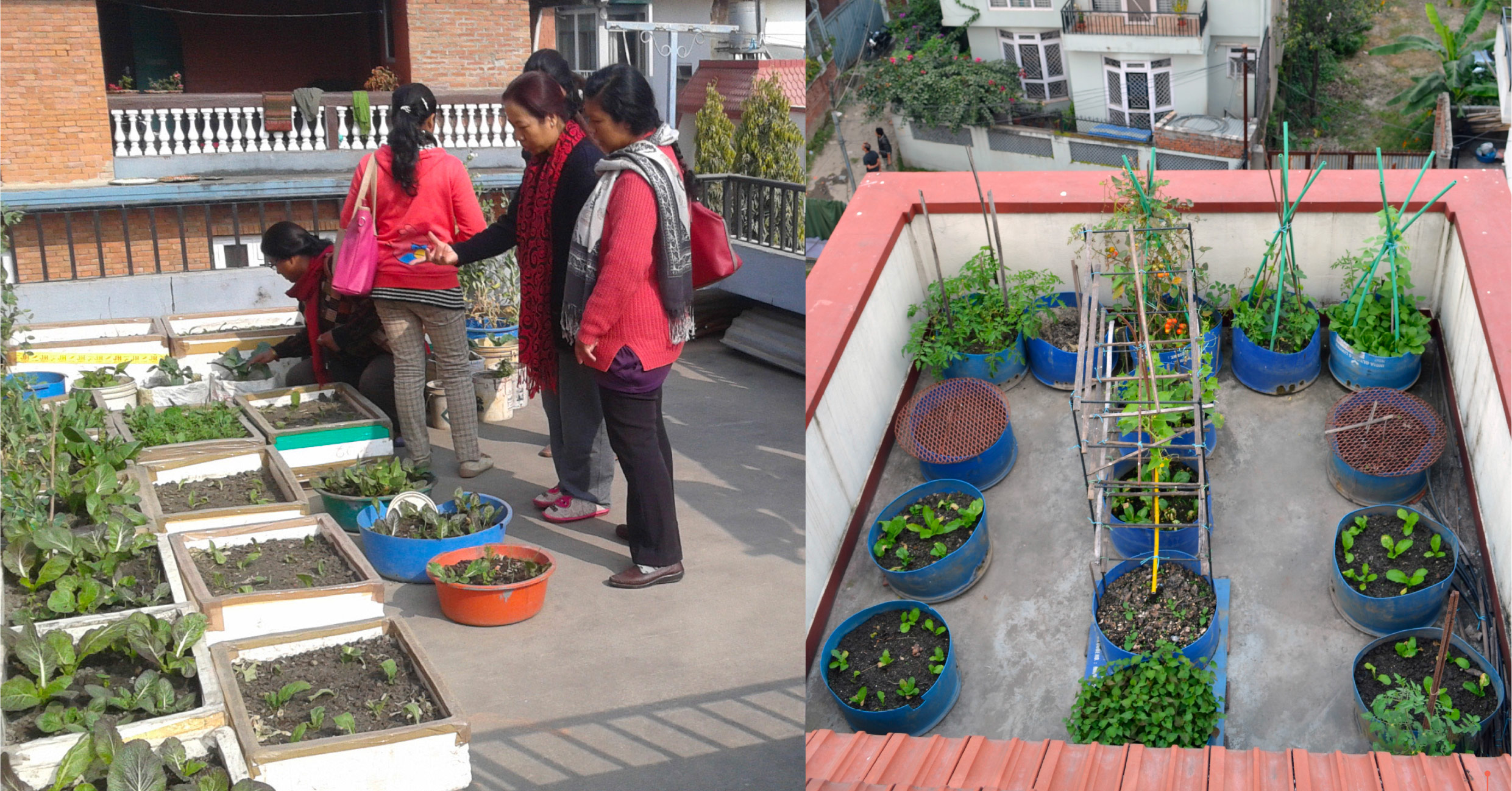If you’re looking for a way to make a positive impact on climate change and improve air quality, you might be surprised to learn that urban gardening could be the solution you’ve been searching for. Urban gardening, the practice of growing plants and crops in urban areas, has been gaining popularity in recent years. It not only provides fresh and healthy produce for local communities but also plays a significant role in mitigating climate change and enhancing air quality. By creating green spaces and absorbing carbon dioxide, urban gardens contribute to reducing greenhouse gas emissions and improving the overall health of urban environments. In this article, we will explore the fascinating role of urban gardening in combating climate change and enhancing air quality.
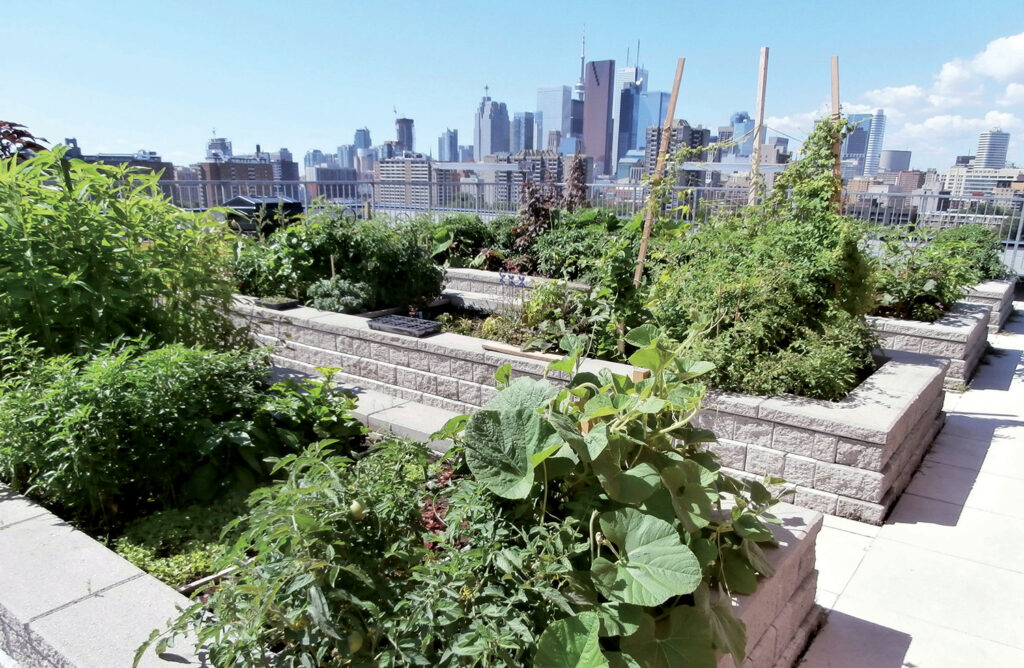
This image is property of journals.openedition.org.
1. Introduction
1.1 Importance of urban gardening
Urban gardening refers to the practice of growing plants and cultivating gardens in urban areas, such as rooftops, balconies, or community spaces, where traditional gardening might not be feasible due to limited space. In recent years, urban gardening has gained significant attention globally due to its numerous benefits, including its potential to mitigate climate change and improve air quality.
1.2 Significance of climate change and air quality
Climate change is a pressing global issue that threatens the health and well-being of both humans and ecosystems. The excessive release of greenhouse gases, such as carbon dioxide (CO2), into the atmosphere is the primary driver of climate change. Similarly, deteriorating air quality has become a major concern in many urban areas, leading to various adverse health effects, including respiratory problems, cardiovascular diseases, and even premature death. Urban gardening presents a unique opportunity to address these challenges by acting as a climate change mitigation strategy and positively impacting air quality.
2. Urban Gardening as a Climate Change Mitigation Strategy
2.1 Carbon sequestration
Urban gardening plays a crucial role in carbon sequestration, which is the process of capturing and storing carbon dioxide. Plants absorb CO2 through photosynthesis, converting it into oxygen and organic compounds. By increasing green spaces through urban gardening, we can effectively sequester carbon, reducing the overall concentration of greenhouse gases in the atmosphere and mitigating climate change.
2.2 Reduction of greenhouse gas emissions
In addition to carbon sequestration, urban gardening can help reduce greenhouse gas emissions by acting as a sustainable food production method. Growing fruits, vegetables, and herbs in urban areas decreases the need to transport produce from rural areas, thereby reducing the associated emissions from transportation, refrigeration, and storage.
2.3 Alleviating heat island effect
Urban areas often experience what is known as the “heat island effect,” where buildings, asphalt, and concrete absorb and radiate heat, leading to increased temperatures. Urban gardening, particularly the presence of trees and plants, can mitigate this effect by providing natural shade, cooling the air through evapotranspiration, and reducing the energy demand for air conditioning in buildings.
2.4 Enhancing biodiversity
Urban gardening contributes to the preservation and enhancement of biodiversity by providing habitats for various plant species and supporting pollinators, such as bees and butterflies. By incorporating native plant species into urban gardens, we can create green corridors that connect fragmented patches of natural habitats, promoting ecological balance and enhancing urban biodiversity.
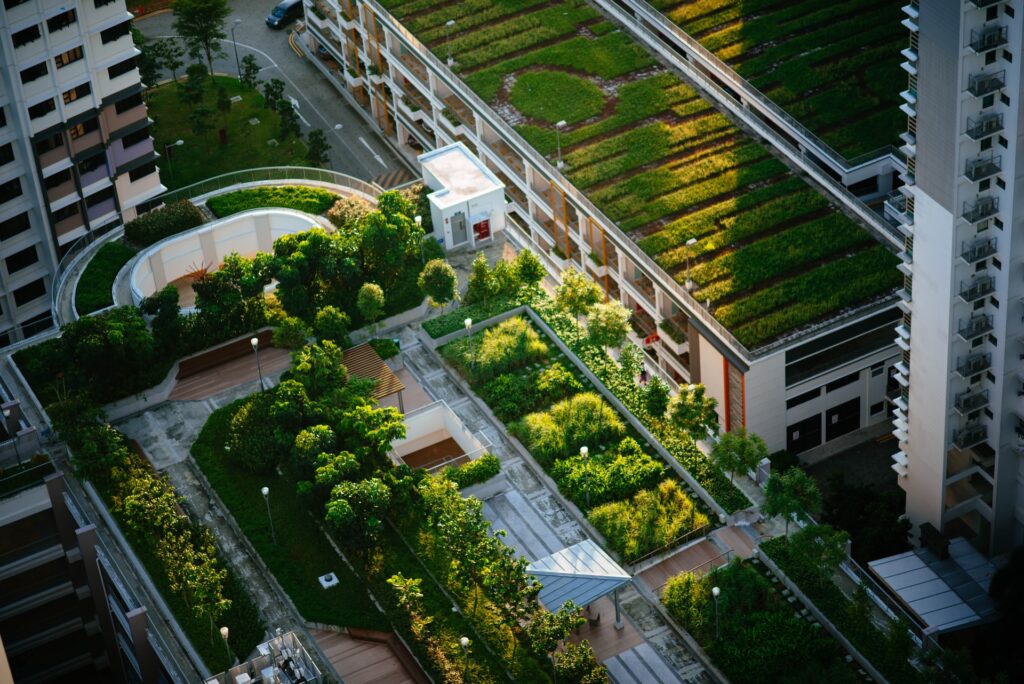
This image is property of i0.wp.com.
3. Impact of Urban Gardening on Air Quality
3.1 Reduction of air pollutants
Urban environments are often rife with air pollutants derived from vehicular emissions, industrial activities, and other sources. However, urban gardening can help mitigate this issue by acting as a natural air filter. Green spaces absorb and break down pollutants, such as nitrogen oxides and volatile organic compounds (VOCs), through a process known as phytoremediation, resulting in cleaner and healthier air in urban areas.
3.2 Oxygen production
Plants are natural oxygen factories. Through photosynthesis, they release oxygen into the atmosphere, improving air quality and making it more breathable. Urban gardening increases the number of plants in urban areas, thereby enhancing oxygen production and helping to counterbalance the high levels of carbon dioxide present in cities.
3.3 Absorption of VOCs
Volatile organic compounds (VOCs) are chemicals found in many household products, such as cleaning agents, paints, and glues, that can be harmful to human health. Urban gardening can play a significant role in absorbing and reducing VOCs, helping to mitigate the negative impact of these chemicals on air quality.
3.4 Filtering particulate matter
Particulate matter, including dust, soot, and other airborne particles, is a common air pollutant in urban areas. The presence of vegetation in urban gardens helps filter and trap these particles, preventing them from entering the respiratory system and improving overall air quality. Urban gardening, therefore, acts as a natural barrier against particulate matter pollution.
4. Health Benefits of Urban Gardening
4.1 Stress reduction
Urban gardening provides a therapeutic and stress-relieving experience for individuals. Engaging in gardening activities, such as planting, pruning, and harvesting, promotes relaxation and has been shown to reduce stress levels. The combination of fresh air, physical activity, and the connection with nature can have positive effects on mental well-being.
4.2 Mental well-being
Spending time in nature and interacting with green spaces has been linked to improved mental health. Urban gardening offers opportunities for individuals to connect with nature, fostering a sense of calmness, improved mood, and reduced anxiety and depression symptoms. The act of nurturing plants and watching them grow can also provide a sense of purpose and accomplishment.
4.3 Physical exercise
Engaging in urban gardening requires physical activity, including bending, stretching, digging, and lifting. These activities contribute to an active lifestyle and provide a form of exercise that can improve cardiovascular health, strengthen muscles, and promote flexibility. Incorporating physical exercise through urban gardening can lead to a healthier and more active lifestyle.
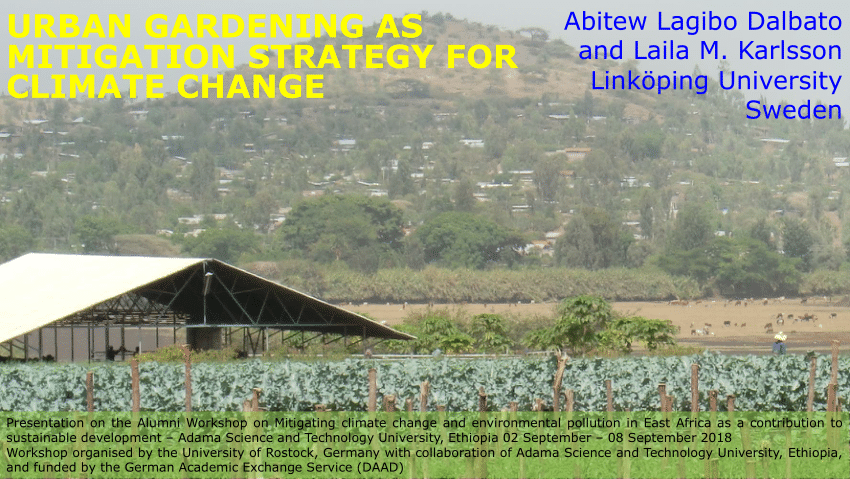
This image is property of i1.rgstatic.net.
5. Economic and Social Advantages of Urban Gardening
5.1 Economic opportunities
Urban gardening can create economic opportunities by providing a platform for entrepreneurship and small-scale businesses. Individuals can sell their produce locally or participate in farmers’ markets, thus contributing to the local economy and establishing sustainable livelihoods. Additionally, urban gardening can reduce household food expenses through self-sufficiency and the cultivation of affordable, nutritious produce.
5.2 Community engagement and empowerment
Urban gardening serves as a catalyst for community engagement, fostering a sense of belonging and social cohesion. Community gardens, in particular, provide spaces for people to interact, share knowledge and skills, and work together towards a common goal. These collaborative efforts build stronger communities, empower individuals, and promote a sense of ownership and pride in their surroundings.
6. Challenges and Barriers to Urban Gardening
6.1 Limited space and land availability
One of the primary challenges of urban gardening is the limited availability of space in densely populated urban areas. Lack of access to land, especially in cities with high real estate values, poses a significant barrier to establishing large-scale urban gardens. However, innovative solutions, such as vertical farming and rooftop gardens, have emerged to overcome this limitation.
6.2 Resource limitations
Urban gardening requires access to essential resources, including water, soil, and sunlight. Limited access to these resources, especially in urban environments with restricted water supplies or contaminated soil, can make it challenging to sustain urban gardens. Implementing resource-efficient techniques, such as drip irrigation systems and composting, can help alleviate these limitations.
6.3 Lack of knowledge and skills
Many individuals, particularly those residing in urban areas, may lack the necessary knowledge and skills to engage in successful gardening practices. Limited understanding of plant care, gardening techniques, and sustainable practices can hinder the establishment and maintenance of urban gardens. Addressing this barrier requires educational programs, workshops, and community initiatives to provide individuals with the necessary knowledge and skills.
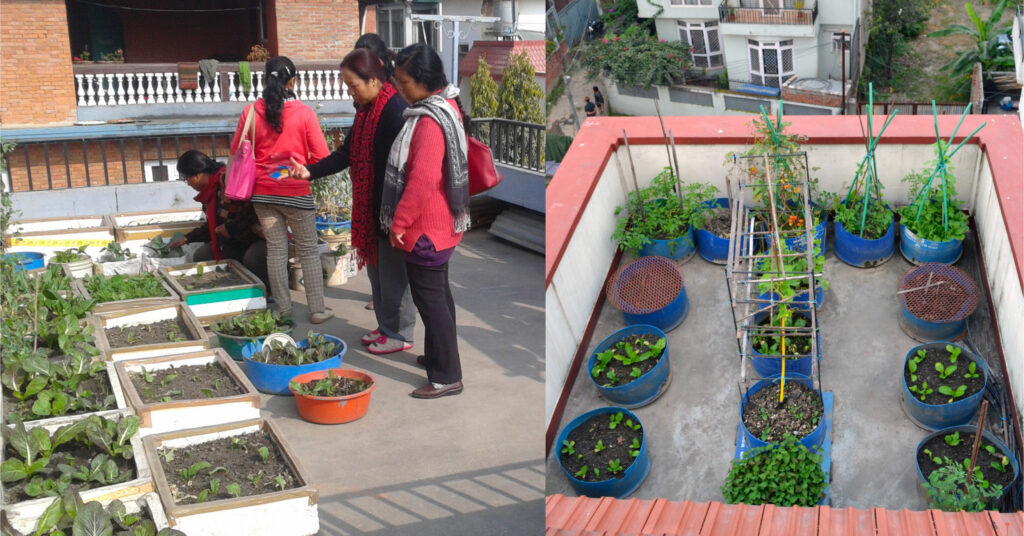
This image is property of journals.openedition.org.
7. Government and Policy Support for Urban Gardening
7.1 Incorporating urban gardening in urban planning
Government support and policy frameworks that incorporate urban gardening into urban planning can help overcome the barriers and challenges associated with limited space and resource availability. By mandating the inclusion of green spaces and the integration of urban gardening in urban development plans, local authorities can encourage the establishment and maintenance of urban gardens.
7.2 Financial incentives and grants
Financial incentives, such as tax deductions, grants, and subsidies, can motivate individuals and organizations to engage in urban gardening initiatives. Governments can provide financial support to encourage the establishment of community gardens, the adoption of sustainable gardening practices, and the development of rooftop or vertical farming projects. These incentives can significantly contribute to the growth of urban gardening.
7.3 Education and awareness programs
Government-led education and awareness programs are essential to empower individuals with the knowledge and skills required for successful urban gardening. By partnering with educational institutions, community organizations, and gardening experts, governments can organize workshops, training sessions, and information campaigns to promote the benefits of urban gardening and provide guidance on gardening techniques.
8. Successful Examples of Urban Gardening Initiatives
8.1 Rooftop gardens
Rooftop gardens have gained popularity in many urban areas as a way to utilize underutilized spaces for gardening purposes. Cities like New York and Singapore have witnessed remarkable success with rooftop gardens, transforming vast expanses of concrete into green havens that promote biodiversity, improve air quality, and provide access to fresh produce for local communities.
8.2 Vertical farming
Vertical farming, a method of growing plants in vertically stacked layers, is another innovative approach to urban gardening. By utilizing vertical space in buildings, this method maximizes the use of limited space, allows for year-round cultivation, and reduces the need for extensive land use. Vertical farming initiatives have been successful in cities like Tokyo and Berlin, addressing food security concerns and reducing dependency on long-distance food transportation.
8.3 Community gardens
Community gardens serve as focal points for community engagement and empowerment. They provide individuals with the opportunity to collectively cultivate and maintain shared gardening spaces. Numerous cities, such as Seattle and Melbourne, have established community garden programs that promote social interactions, enhance food security, and foster a sense of community pride.
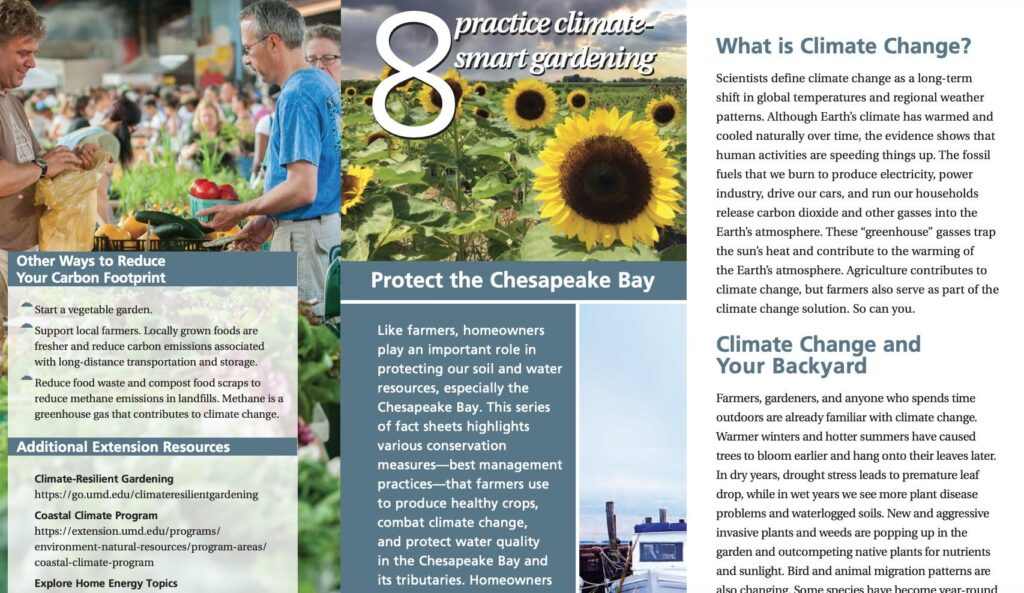
This image is property of extension.umd.edu.
9. Future Prospects and Recommendations
9.1 Scaling up urban gardening initiatives
To promote widespread adoption of urban gardening, efforts should be made to scale up initiatives. Governments, local authorities, and community organizations should collaborate to establish larger urban gardens, encompassing more vacant spaces and involving a greater number of participants. Scaling up these initiatives will maximize the positive impact on climate change, air quality, and community well-being.
9.2 Collaboration and partnerships
Collaboration and partnerships between different stakeholders are crucial for the success of urban gardening. Governments should work closely with community organizations, educational institutions, businesses, and individuals to pool resources, knowledge, and expertise. By fostering these partnerships, cities can create a supportive ecosystem that encourages and sustains urban gardening efforts.
9.3 Research and innovation
Investment in research and innovation plays a pivotal role in advancing urban gardening practices. Governments, academic institutions, and private entities should allocate resources to study and develop innovative technologies, sustainable gardening techniques, and plant species suitable for urban environments. These advancements will ensure the continued growth and success of urban gardening in addressing climate change, air quality, and societal challenges.
10. Conclusion
Urban gardening represents a unique and powerful tool for mitigating climate change, improving air quality, and promoting individual and community well-being. By sequestering carbon, reducing greenhouse gas emissions, enhancing biodiversity, and filtering pollutants, urban gardens offer numerous environmental benefits. Additionally, urban gardening provides economic opportunities, fosters community engagement, and contributes to physical and mental health. However, challenges such as limited space, resource constraints, and knowledge gaps need to be addressed through government support, educational programs, and innovative solutions. By leveraging successful initiatives, scaling up efforts, and investing in collaboration, research, and innovation, urban gardening can emerge as a key strategy for a sustainable and resilient urban future.

